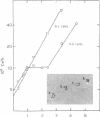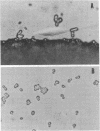Abstract
Saccharomyces kluyveri is a heterothallic yeast with two allelic mating types denoted as a-k and α-k by analogy with Saccharomyces cerevisiae and from the work described here. S. kluyveri produces mating pheromones analogous to those of S. cerevisiae, but which appear to have different specificity. S. kluyveri thus differs from S. cerevisiae, Hansenula wingei, and Schizosaccharomyces pombe in that it exhibits both strong constitutive agglutination and mating pheromones. α-k cells produce a pheromone (“α-k-factor”) which causes a-k cells to arrest in the G1 phase of the cell cycle and to undergo a morphological change. After a period of time dependent on the concentration of α-k-factor, cells exposed to the factor resume cell division. α-k-factor has no effect on a-k/α-k diploids or on α-k cells, but at high concentration does induce G1 arrest of S. cerevisiaea cells (a-c). a-k cells produce a pheromone (“a-k-factor”) which causes α-k cells to exhibit a morphological change. In addition, a-k cells exhibit the Bar phenotype with respect to α-k-factor. Partially purified preparations of S. cerevisiae α-factor are more active in inducing G1 arrest of a-k cells than of a-c cells. A more purified preparation of α-c-factor is less active against a-k cells than a-c cells, suggesting that an additional factor (KRE, kluyveri response enhancer) may be lost during purification. Attempts to mate S. kluyveri and S. cerevisiae cells by prototroph selection and by cell-to-cell mating have been unsuccessful with all combinations of mating types. Thus, S. cerevisiae and S. kluyveri are incompatible for mating even though their pheromones exhibit some physiological cross-reaction.
Full text
PDF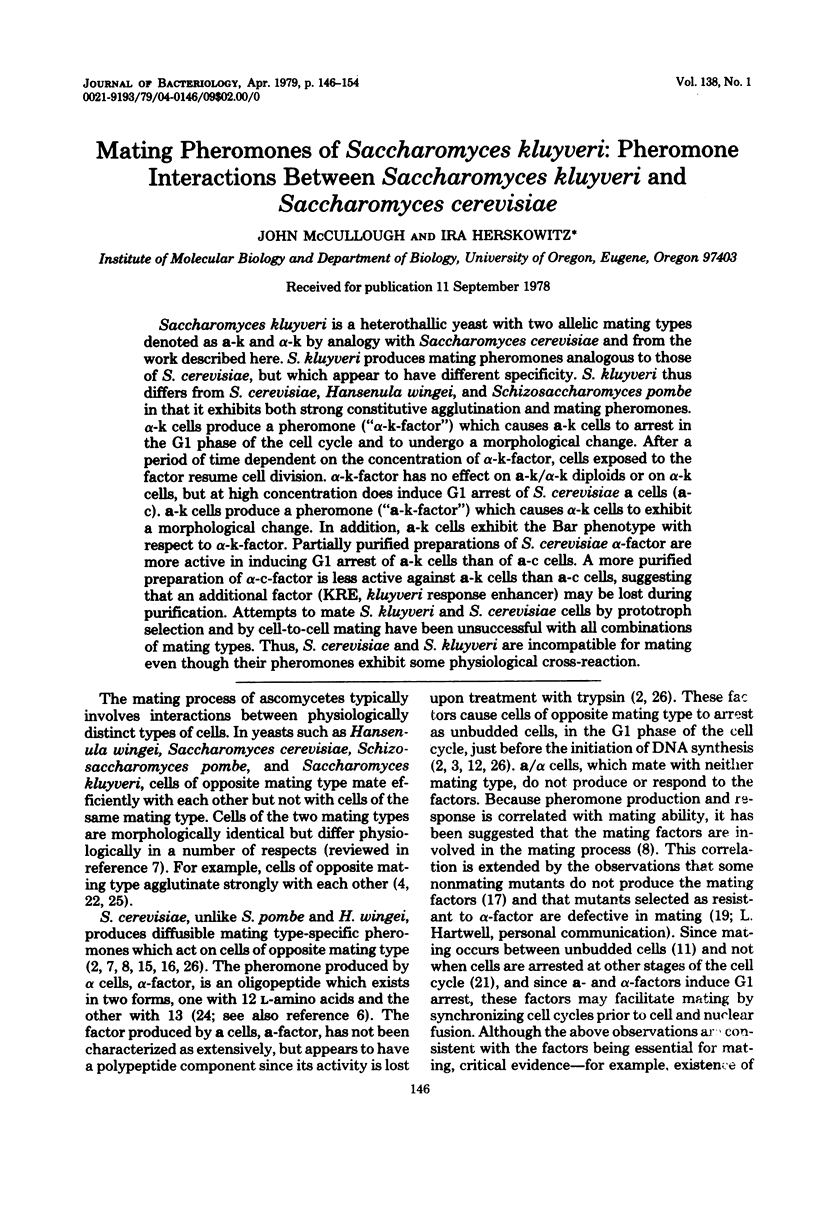
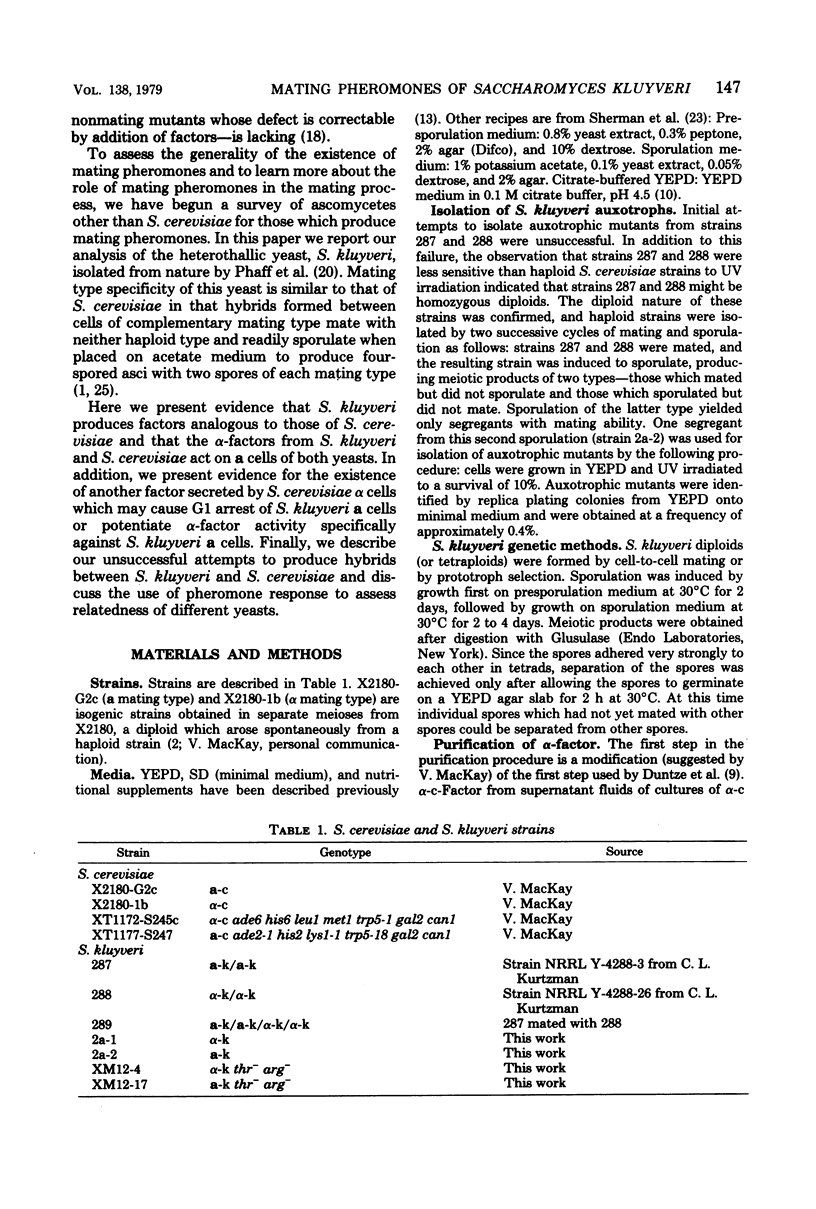
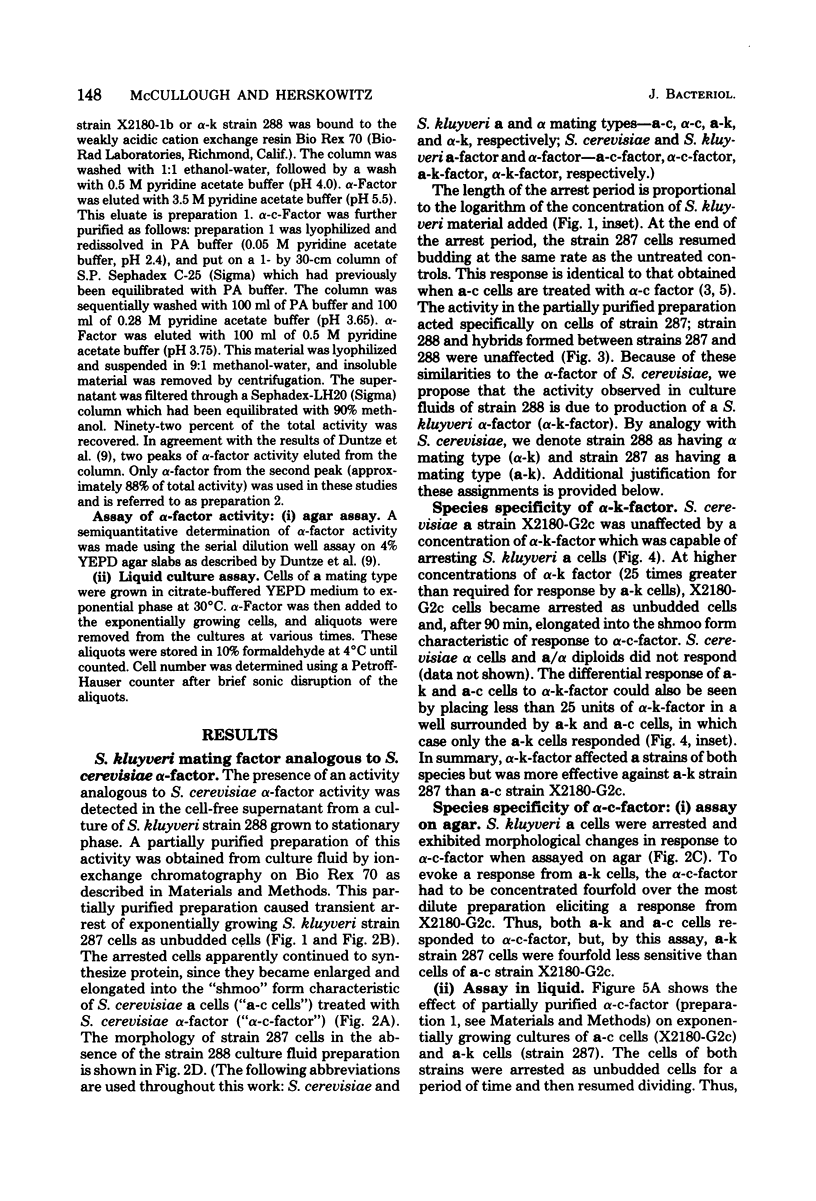
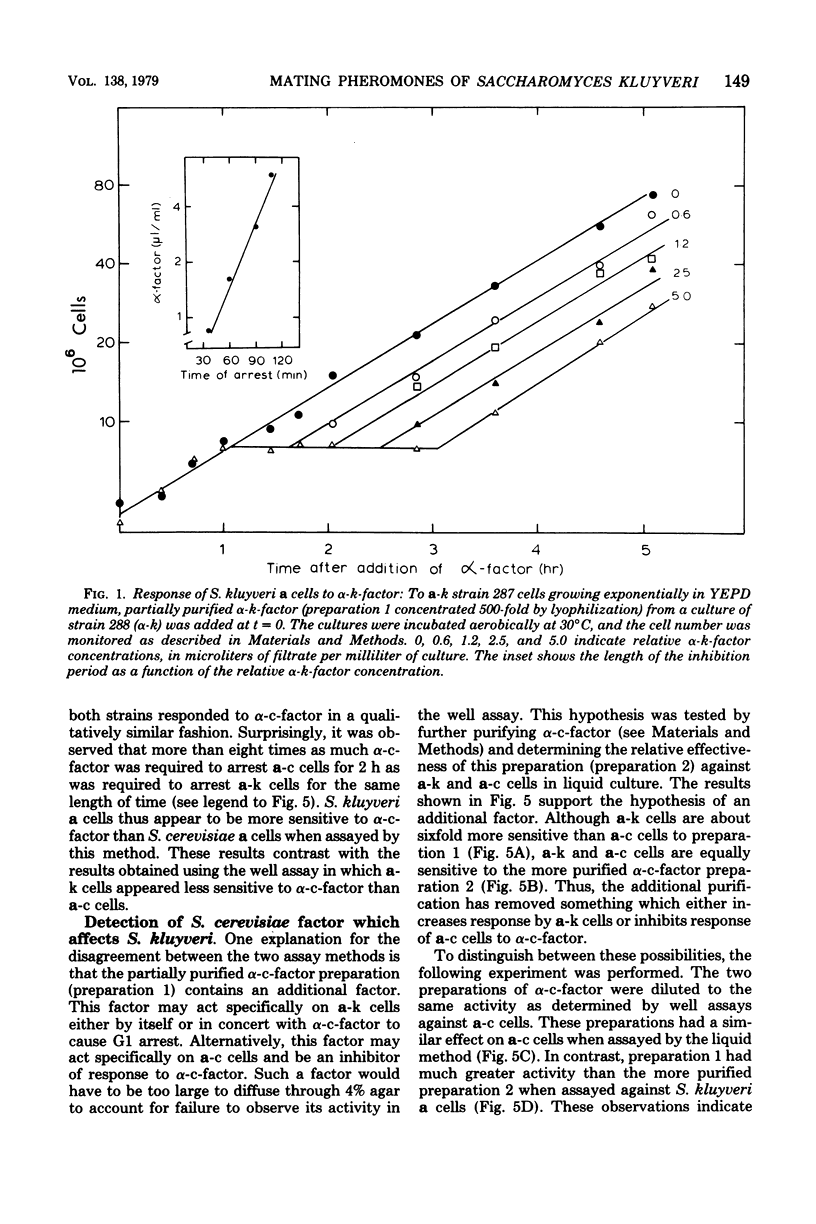
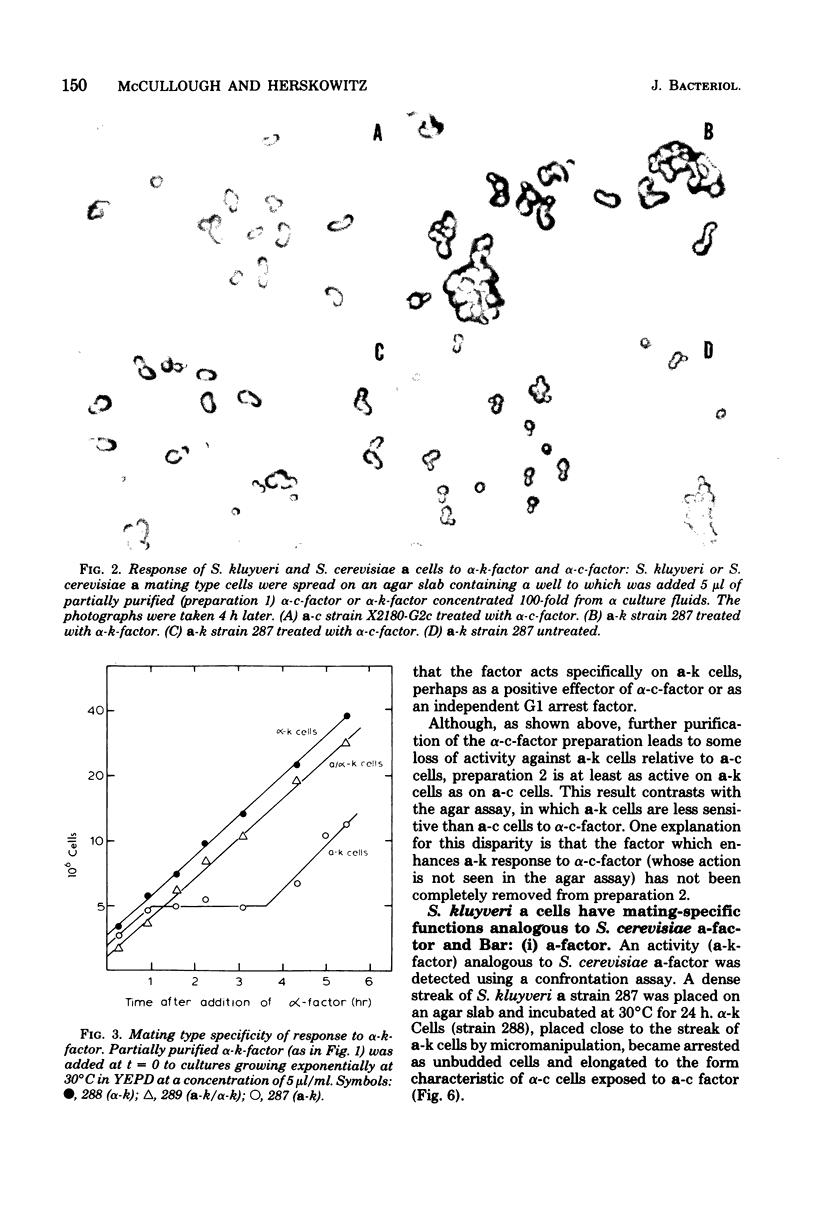
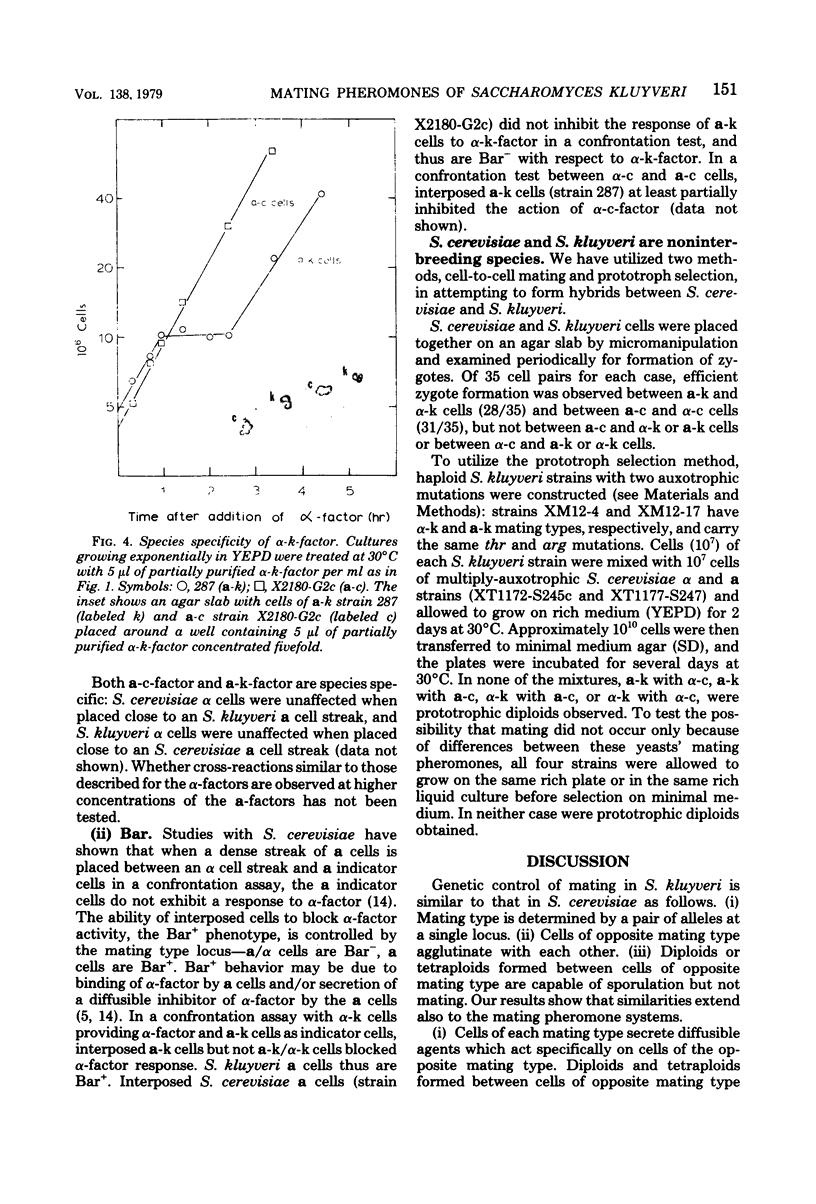
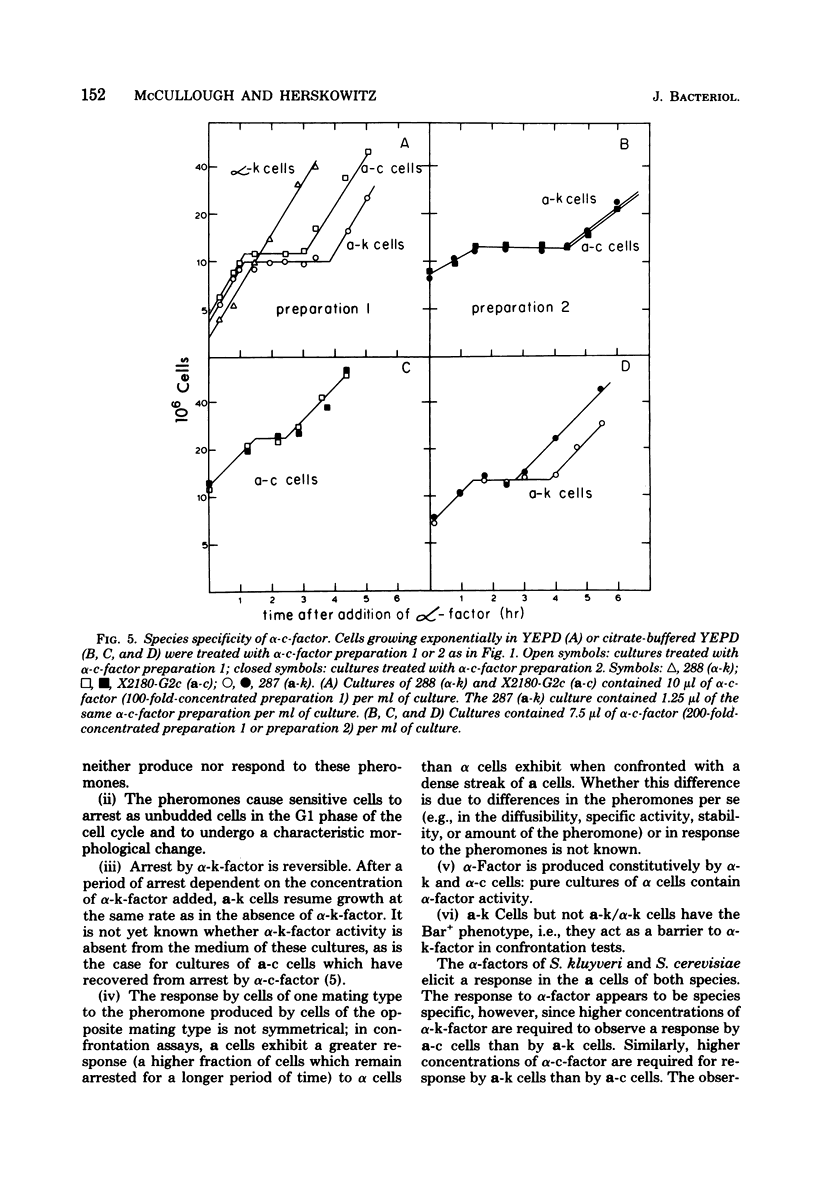
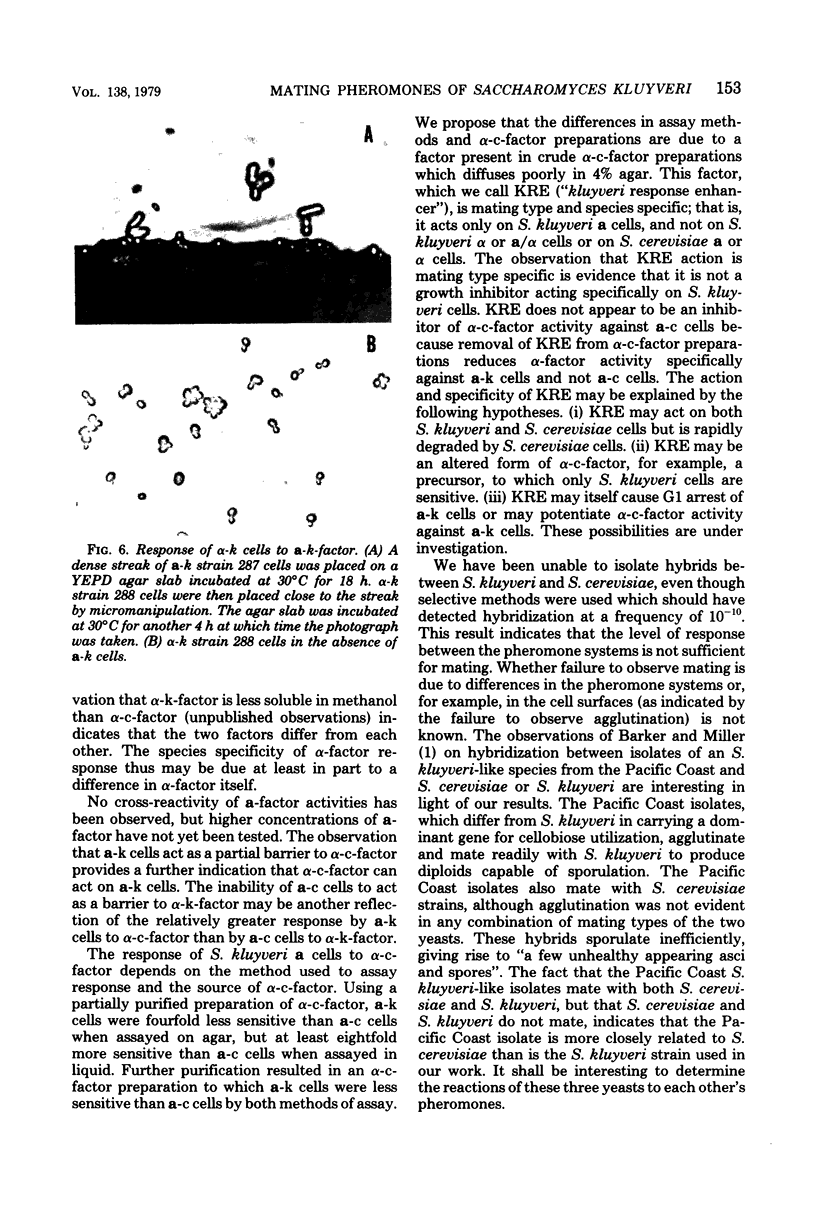
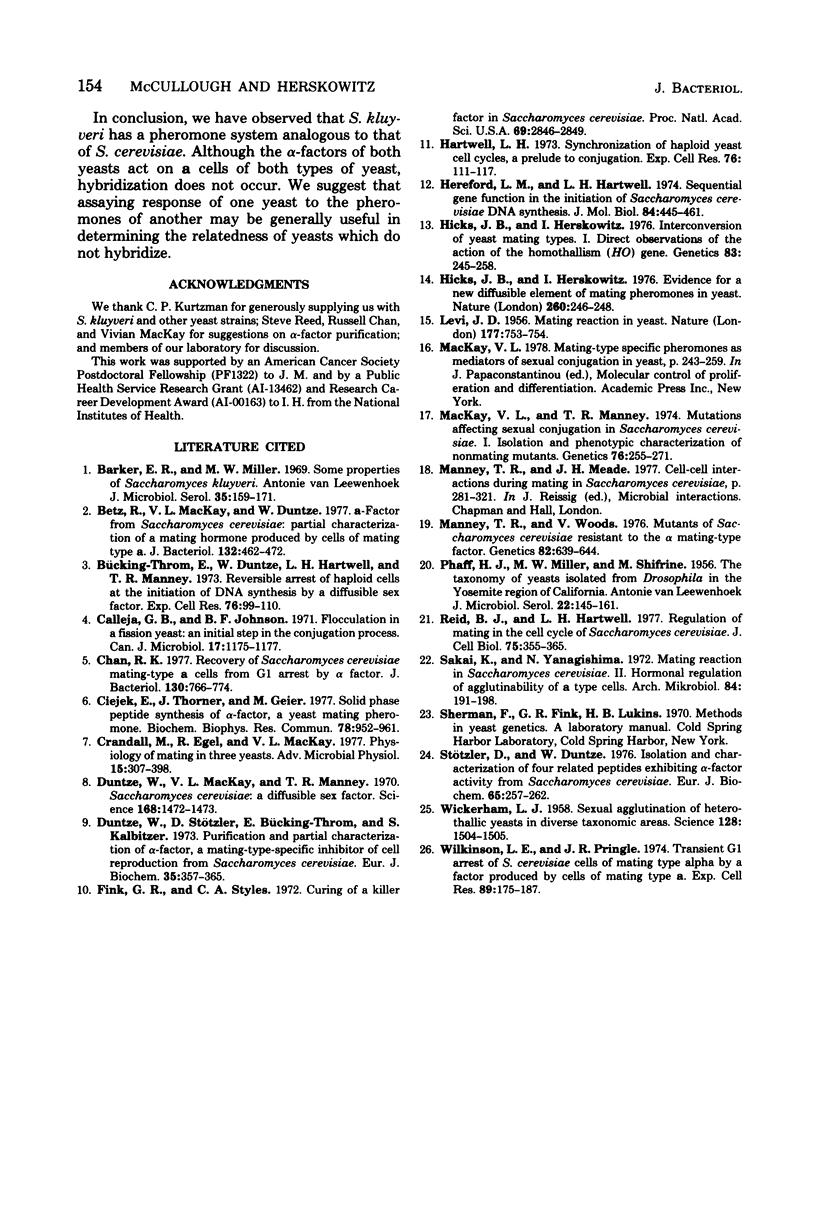
Images in this article
Selected References
These references are in PubMed. This may not be the complete list of references from this article.
- Barker E. R., Miller M. W. Some properties of Saccharomyces kluyveri. Antonie Van Leeuwenhoek. 1969;35(2):159–171. doi: 10.1007/BF02219126. [DOI] [PubMed] [Google Scholar]
- Betz R., MacKay V. L., Duntze W. a-Factor from Saccharomyces cerevisiae: partial characterization of a mating hormone produced by cells of mating type a. J Bacteriol. 1977 Nov;132(2):462–472. doi: 10.1128/jb.132.2.462-472.1977. [DOI] [PMC free article] [PubMed] [Google Scholar]
- Bücking-Throm E., Duntze W., Hartwell L. H., Manney T. R. Reversible arrest of haploid yeast cells in the initiation of DNA synthesis by a diffusible sex factor. Exp Cell Res. 1973 Jan;76(1):99–110. doi: 10.1016/0014-4827(73)90424-2. [DOI] [PubMed] [Google Scholar]
- Calleja G. B., Johnson B. F. Flocculation in a fission yeast: an initial step in the conjugation process. Can J Microbiol. 1971 Sep;17(9):1175–1177. doi: 10.1139/m71-187. [DOI] [PubMed] [Google Scholar]
- Chan R. K. Recovery of Saccharomyces cerevisiae mating-type a cells from G1 arrest by alpha factor. J Bacteriol. 1977 May;130(2):766–774. doi: 10.1128/jb.130.2.766-774.1977. [DOI] [PMC free article] [PubMed] [Google Scholar]
- Ciejek E., Thorner J., Geier M. Solid phase peptide synthesis of alpha-factor, a yeast mating pheromone. Biochem Biophys Res Commun. 1977 Oct 10;78(3):952–961. doi: 10.1016/0006-291x(77)90514-9. [DOI] [PubMed] [Google Scholar]
- Crandall M., Egel R., Mackay V. L. Physiology of mating in three yeasts. Adv Microb Physiol. 1977;15:307–398. doi: 10.1016/s0065-2911(08)60319-7. [DOI] [PubMed] [Google Scholar]
- Duntze W., MacKay V., Manney T. R. Saccharomyces cerevisiae: a diffusible sex factor. Science. 1970 Jun 19;168(3938):1472–1473. doi: 10.1126/science.168.3938.1472. [DOI] [PubMed] [Google Scholar]
- Duntze W., Stötzler D., Bücking-Throm E., Kalbitzer S. Purification and partial characterization of -factor, a mating-type specific inhibitor of cell reproduction from Saccharomyces cerevisiae. Eur J Biochem. 1973 Jun;35(2):357–365. doi: 10.1111/j.1432-1033.1973.tb02847.x. [DOI] [PubMed] [Google Scholar]
- Fink G. R., Styles C. A. Curing of a killer factor in Saccharomyces cerevisiae. Proc Natl Acad Sci U S A. 1972 Oct;69(10):2846–2849. doi: 10.1073/pnas.69.10.2846. [DOI] [PMC free article] [PubMed] [Google Scholar]
- GLEN W. L., BARBER R., MCCONKEY H. M., GRANT G. A. Isolation of beta-dihydroequilin and alpha-dihydroequilenin from the urine of pregnant mares. Nature. 1956 Apr 21;177(4512):753–753. doi: 10.1038/177753a0. [DOI] [PubMed] [Google Scholar]
- Hartwell L. H. Synchronization of haploid yeast cell cycles, a prelude to conjugation. Exp Cell Res. 1973 Jan;76(1):111–117. doi: 10.1016/0014-4827(73)90425-4. [DOI] [PubMed] [Google Scholar]
- Hereford L. M., Hartwell L. H. Sequential gene function in the initiation of Saccharomyces cerevisiae DNA synthesis. J Mol Biol. 1974 Apr 15;84(3):445–461. doi: 10.1016/0022-2836(74)90451-3. [DOI] [PubMed] [Google Scholar]
- Hicks J. B., Herskowitz I. Evidence for a new diffusible element of mating pheromones in yeast. Nature. 1976 Mar 18;260(5548):246–248. doi: 10.1038/260246a0. [DOI] [PubMed] [Google Scholar]
- Hicks J. B., Herskowitz I. Interconversion of Yeast Mating Types I. Direct Observations of the Action of the Homothallism (HO) Gene. Genetics. 1976 Jun;83(2):245–258. doi: 10.1093/genetics/83.2.245. [DOI] [PMC free article] [PubMed] [Google Scholar]
- MacKay V. L. Mating-type specific pheromones as mediators of sexual conjugation in yeast. Symp Soc Dev Biol. 1978;(35):243–259. doi: 10.1016/b978-0-12-612981-6.50021-1. [DOI] [PubMed] [Google Scholar]
- Mackay V., Manney T. R. Mutations affecting sexual conjugation and related processes in Saccharomyces cerevisiae. I. Isolation and phenotypic characterization of nonmating mutants. Genetics. 1974 Feb;76(2):255–271. doi: 10.1093/genetics/76.2.255. [DOI] [PMC free article] [PubMed] [Google Scholar]
- Manney T. R., Woods V. Mutants of Saccharomyces cerevisiae resistant to the alpha mating-type factor. Genetics. 1976 Apr;82(4):639–644. doi: 10.1093/genetics/82.4.639. [DOI] [PMC free article] [PubMed] [Google Scholar]
- PHAFF H. J., MILLER M. W., SHIFRINE M. The taxonomy of yeasts isolated from Drosophila in the Yosemite region of California. Antonie Van Leeuwenhoek. 1956;22(2):145–161. doi: 10.1007/BF02538322. [DOI] [PubMed] [Google Scholar]
- Reid B. J., Hartwell L. H. Regulation of mating in the cell cycle of Saccharomyces cerevisiae. J Cell Biol. 1977 Nov;75(2 Pt 1):355–365. doi: 10.1083/jcb.75.2.355. [DOI] [PMC free article] [PubMed] [Google Scholar]
- Sakai K., Yanagishima N. Mating reaction in Saccharomyces cerevisiae. II. Hormonal regulation of agglutinability of a type cells. Arch Mikrobiol. 1972;84(3):191–198. doi: 10.1007/BF00425197. [DOI] [PubMed] [Google Scholar]
- Stötzler D., Duntze W. Isolation and characterization of four related peptides exhibiting alpha factor activity from Saccharomyces cerevisiae. Eur J Biochem. 1976 May 17;65(1):257–262. doi: 10.1111/j.1432-1033.1976.tb10412.x. [DOI] [PubMed] [Google Scholar]
- WICKERHAM L. J. Sexual agglutination of heterothallic yeasts in diverse taxonomic areas. Science. 1958 Dec 12;128(3337):1504–1505. doi: 10.1126/science.128.3337.1504. [DOI] [PubMed] [Google Scholar]
- Wilkinson L. E., Pringle J. R. Transient G1 arrest of S. cerevisiae cells of mating type alpha by a factor produced by cells of mating type a. Exp Cell Res. 1974 Nov;89(1):175–187. doi: 10.1016/0014-4827(74)90200-6. [DOI] [PubMed] [Google Scholar]




